Understanding Crossfire Bed Bug Insecticide: A Comprehensive Guide


Intro
In the wake of increasing bed bug infestations in urban settings, understanding effective pest control methods becomes crucial. Homeowners and tenants alike often find themselves in a tight spot when these resilient pests invade their living spaces. It is essential to equip oneself with knowledge about the tools available for eradication, and Crossfire bed bug insecticide stands out as a formidable choice in the pest control arsenal. In this guide, we will explore various facets of Crossfire’s effectiveness, its application methods, safety concerns, and how it fits within an integrated pest management strategy.
Pest Identification
Detailed Descriptions of Common Pests
Bed bugs, scientifically known as Cimex lectularius, are small, flat, and oval-shaped insects that typically measure about a quarter of an inch long. Their reddish-brown coloration makes them identifiable against light-colored sheets. Adult bed bugs can be easily distinguished from other pests by their size and specific body shape. Other common pests include cockroaches and fleas, but they exhibit quite different characteristics and behaviors.
Signs and Symptoms of Infestations
Identifying a bed bug infestation early is key to effective control. Household signs include:
- Bites: Small, itchy welts on the skin, often appearing in clusters.
- Droppings: Tiny dark specks resembling pepper, usually found on mattresses or near their hiding spots.
- Shells: Shed exoskeletons that bed bugs leave behind as they grow.
- Blood Stains: Small reddish spots on bed linens, caused by crushed bugs.
If these symptoms are present, it’s vital to take action swiftly.
Prevention Strategies
Home Maintenance Tips for Pest Prevention
Prevention is always better than cure, especially when dealing with persistent pests like bed bugs. Here are some practical maintenance tips:
- Seal Cracks and Crevices: Ensure that walls, baseboards, and furniture are sealed to prevent bed bugs from hiding.
- Declutter: Reducing clutter not only minimizes hiding places but also makes thorough inspections easier.
- Regular Inspections: Conduct routine checks on bedding and furniture, especially if you suspect an infestation might be nearby.
Natural Deterrents and Barriers
While chemical treatments are effective, there are also natural deterrents worth considering:
- Diatomaceous Earth: A natural powder that can kill bed bugs when they crawl over it.
- Essential Oils: Some oils like tea tree or lavender may deter bugs; however, their efficacy may vary.
Treatment Options
Overview of Chemical vs. Natural Treatments
When it comes to treating bed bugs, there are two main approaches: chemical and natural. Chemical treatments, such as Crossfire, are often swift and effective against larger infestations. Natural treatments take longer and may require continuous application but are preferred by those looking to avoid pesticides.
Step-by-Step Guides for DIY Treatments
- Preparation: Remove all bedding and vacuum thoroughly.
- Application of Insecticide: Following the manufacturer’s guidelines for Crossfire, apply it carefully in infested areas. Ensure that you wear protective gear.
- Reintegrate: Allow time for the insecticide to act before reintroducing cleaned linens.
- Monitor: Conduct follow-up inspections to ensure that all pests have been eliminated.
Effective pest control is not just about applying chemicals; it also involves maintaining a healthy living environment and adopting a proactive approach.
In seeking to mitigate the frustration arising from bed bugs, understanding the full scope of treatment options, prevention tactics, and identification methods will serve you well. Maintaining awareness and taking timely action forms the bedrock of successful pest management.
Prologue to Bed Bug Infestations
Bed bug infestations have grown into a pressing concern for many homeowners, causing distress and chaos. Understanding the nuances of these pests is not merely academic; it's essential for effective management and eradication. This section lays the groundwork for grasping how bed bugs operate, their lifecycle, and the havoc they can wreak if left unchecked.
Characteristics of Bed Bugs
Understanding how to tackle bed bugs begins with knowing the enemy. These nocturnal insects, scientifically known as Cimex lectularius, are small, wingless, and typically reddish-brown. They can easily be mistaken for other insects if not observed closely. Adult bed bugs average about the size of an apple seed, measuring roughly 5 to 7 millimeters in length.
Key features include:
- Flat bodies: This allows them to hide discreetly in cracks and crevices.
- Lifespan: They can live several months without feeding, making them particularly troublesome.
- Biology and behavior: Bed bugs are attracted to warmth and carbon dioxide, often locating their hosts (humans) during sleep. They have a unique ability to reproduce rapidly; a single female can lay hundreds of eggs over her lifetime.
Knowing these traits not only helps identify them but also underscores why they're such resilient pests.
Signs and Symptoms of an Infestation
Recognizing the signs of a bed bug invasion is crucial. Homeowners should be vigilant and act upon the first signs to thwart further escalation. Classic indicators include:
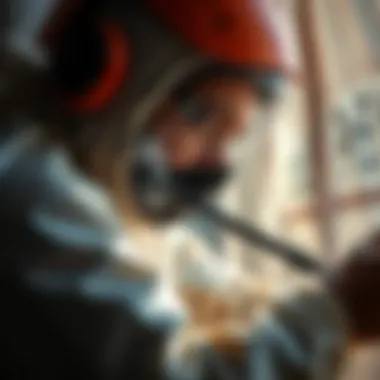
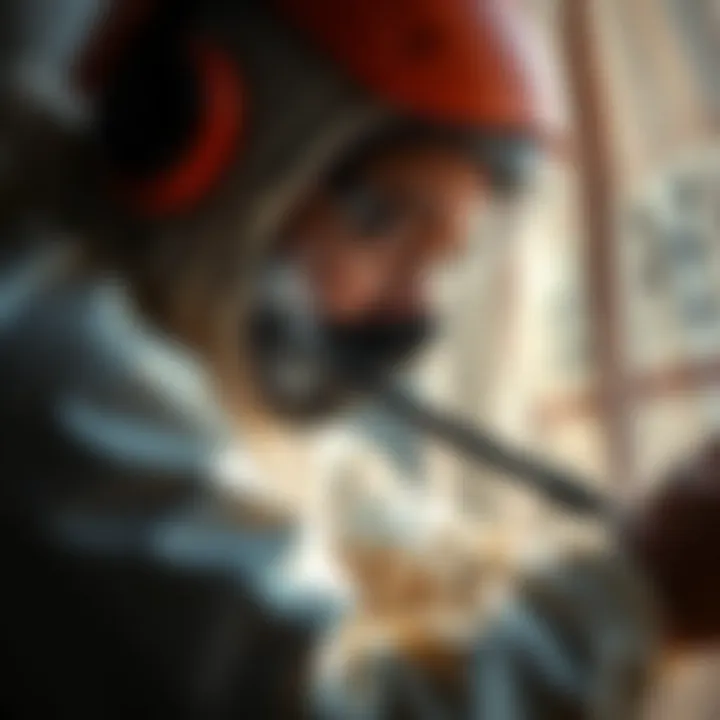
- Bite marks: Small, red welts often appear in clusters on the body, typically on exposed skin.
- Blood stains: Tiny, dark spots on bed sheets or upholstery can be a telltale sign of bed bug activity after feeding.
- Fecal matter: Like miniature ink stains, bed bug droppings can often be found in their hiding spots such as mattress seams or bed frames.
- Egg casings: These pale yellow shells signify the newer generation of bed bugs and are usually found in clusters.
- Bed bug odors: An unpleasant, musty smell may emanate from an affected area due to pheromones released by the bugs.
By familiarizing oneself with these symptoms, homeowners can take proactive measures before a minor issue burgeons into a full-blown infestation.
Ultimately, understanding bed bugs goes beyond mere identification. It equips homeowners with the means to safeguard their homes and maintain a pest-free living environment. This knowledge acts as our first line of defense against the havoc these pests can wreak.
Overview of Crossfire Bed Bug Insecticide
Understanding the intricacies of Crossfire bed bug insecticide is crucial for homeowners and pest control professionals alike. The effectiveness of any pest treatment hinges on its formulation, mode of action, and how it fits into broader pest management strategies. Crossfire, in particular, offers a targeted approach to bed bug eradication while also addressing concerns about safety and environmental impact.
When one considers pest control options, the decision often hinges on multiple factors such as efficacy, safety, and convenience. Crossfire stands out thanks to its unique blending of active ingredients that work synergistically to combat these stubborn pests. It combines different modes of action, making it a formidable choice for those dealing with bed bug issues.
Ingredients and Formulation
Crossfire's formulation is primarily composed of two active ingredients: prallethrin and metofluthrin, which fall under the category of synthetic pyrethroids. These compounds are known for their rapid knockdown effect, which means they can kill bed bugs on contact. They also have residual properties that continue to eliminate bed bugs over time, making them an efficient choice for homeowners keen on long-term solutions.
Here’s a closer look at these ingredients:
- Prallethrin: This ingredient targets the insect’s nervous system, causing paralysis and ultimately death. Its fast-acting nature is crucial during an initial infestation phase, when swift action is needed.
- Metofluthrin: Acting as a repellent as well as a poison, it creates a barrier around treated areas, making it less likely for bed bugs to enter those spaces.
- Other Inactive Ingredients: Combined with water and other compounds, these enhance the overall application and delivery of the active ingredients.
The formulation ensures it is suitable for various surfaces, including bedding, carpets, and upholstery – the common haunts of bed bugs.
Mechanism of Action
Crossfire operates on a dual mechanism that can be likened to a double-edged sword against bed bugs. Firstly, it disrupts their nervous system almost immediately upon contact, leading to a rapid knockdown. Secondly, the prolonged exposure to its residual properties ensures that even those bugs that weren't in direct contact during application are eventually affected.
This two-pronged attack not only kills existing bugs but also plays a role in preventing future infestations by eliminating eggs and newly hatched nymphs that come in contact with treated surfaces.
"Using a mix of immediate action and residual efficacy is key in turning the tide against bed bug invasions."
Such a combination is critical, especially in environments where reinfestation is a constant concern, such as multi-family housing or hotels. Crossfire is designed for such realities and has proven capable in addressing the persistent challenge of bed bugs.
In summary, the overview of Crossfire bed bug insecticide encapsulates a targeted, effective approach towards bed bug management. Its formulation, composed of powerful active ingredients, coupled with a sophisticated mechanism of action, solidifies its place in the not-so-simple realm of pest control. Homeowners now have a reliable tool at their disposal for mitigating infestations, allowing them to reclaim their living spaces effectively.
Application Techniques for Crossfire
When dealing with a bed bug problem, having the right tools and techniques can make all the difference. The application methods used for Crossfire bed bug insecticide are vital, as they directly affect its effectiveness. Proper application helps ensure you get the most out of the product while minimizing risks associated with pests and chemicals. Here, we’ll explore essential elements such as preparation, correct application methods, and post-application protocols, all of which contribute to a more effective pest control experience.
Preparation for Application
Before diving into applying Crossfire, preparation is an often overlooked but critical step. First things first, clear the area you plan to treat. Make enough room to move around and complete the job thoroughly. It’s key to strip beds, move furniture, and vacuum surfaces to pick up any dead bugs and eggs before you even think about spraying.
"Preparation isn’t just a footnote in the manual; it’s the roadmap to success."
Next, ensure you are dressed appropriately. Wear gloves and a mask to protect yourself from inhaling any particles or chemicals. It might sound nitpicky, but ensuring that you have all your equipment ready—like spray bottles filled with the right mixture, extra gloves, and any protective eyewear—can save you time and hassle later on. Check the weather if you're treating outdoor areas, and follow all safety guidelines mentioned on the product label. Also, reading the label isn’t just for show; it holds crucial information about mixing and dosage.
Correct Application Methods
With your workspace set and safety gear donned, it’s go time! Apply Crossfire using a hand-held sprayer or a backpack sprayer, depending on how big your infestation is. For personal spaces, like beds or dressers, a hand-held sprayer often works better. It allows for more control and accuracy, so you don’t end up soaking your furniture or flooring.
When spraying, target crevices, seams, and areas near where you suspect pests might be hiding. Make sure to create a uniform coat rather than drowning the surface. A good rule of thumb is to spray until it's slightly damp but not dripping. Don’t forget to treat areas like baseboards, carpet edges, and behind electrical sockets.
Here is a quick checklist for effective application:
- Avoid high winds or rain if treating outdoors to prevent runoff.
- Spray in the morning or evening. Pests are usually more active during the night.
- Keep pets and children away during the application to ensure complete safety.
Post-Application Protocols
Once you've finished applying Crossfire, your job isn’t quite done. The post-application stage is equally important and often neglected. Let the treated area dry completely before re-entering with kids or pets. It's natural to want to check how things are going right away, but that can lead to exposing yourself to excess chemicals.
After a treatment, it’s also wise to monitor the situation closely. Keep an eye out for any signs of bed bugs returning; they can be tenacious little critters. Typically, you may want to re-inspect the area after several days. Another round of application might be necessary, depending on how well the initial treatment worked.
To further enhance efficacy:
- Keep your living space clutter-free to minimize hiding spaces.
- Consider a follow-up inspection with a professional pest control expert to assess long-term effectiveness.
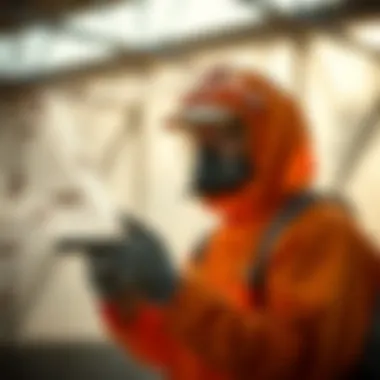
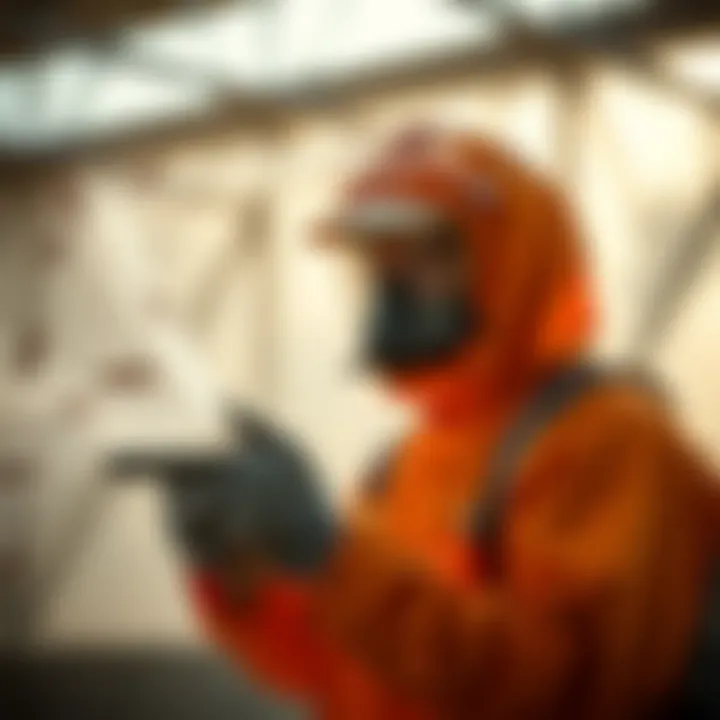
By meticulously preparing, applying correctly, and following important post-application steps, you stand a much better chance at successfully eradicating bed bugs while effectively using Crossfire insecticide.
Efficacy of Crossfire in Pest Management
In the battle against bed bugs, the efficacy of the chosen insecticide can make all the difference. Crossfire, a noteworthy contender in this arena, stands out not just for its active ingredients but also for how well it integrates into broader pest management strategies. Its effectiveness lies in a combination of factors such as immediate knockdown ability, residual activity, and compatibility with complementary pest control methods.
A deep understanding of how Crossfire compares with other treatments can significantly inform one's pest management decisions. This section will explore its comparative efficacy and the long-term effectiveness of Crossfire, shedding light on its place within residential pest control.
Comparative Efficacy with Other Treatments
When home and property owners face the stubborn presence of bed bugs, they often weigh various treatment options. Many people might throw various choices into the ring, such as pyrethroids, desiccants, and even steam treatments. However, Crossfire has its own unique advantages, particularly when it comes to speed and potency. Unlike traditional pyrethroids, which may leave some bed bugs unscathed, Crossfire's dual-active ingredient formulation works on contact and ingestion, providing a faster knockout effect.
Several studies have shown that Crossfire is more effective at eliminating bed bugs in stages of life, including eggs, nymphs, and adults. This means it doesn't just target the adult population but also prevents further infestations by destroying embryonic pests before they have a chance to mature. In comparison to other treatments such as those based on only one ingredient or that lack a mode of action hitting multiple life stages, Crossfire boasts a more comprehensive solution to pest management.
"Crossfire's unique formulation sets it apart from other insecticides by targeting various life stages effectively, offering a more holistic approach to bed bug eradication."
Furthermore, the instant vapor action of Crossfire allows for quicker treatments, enabling homeowners to observe changes almost immediately after application. This efficiency is especially critical for anyone dealing with the emotional and physical strain caused by these resilient pests.
Long-Term Results and Effectiveness
Tackling bed bugs isn't merely about getting rid of them today; it’s equally important to ensure they don’t come back tomorrow. Here is where Crossfire shines with its long-term effectiveness. After proper application, Crossfire can maintain its insecticidal properties for several weeks, giving it an edge over treatments requiring frequent reapplication.
Long-term studies suggest that Crossfire outperforms many competing products in terms of residual effect, remaining effective even as other treatments fade over time. This characteristic is particularly beneficial for those who may not have the resources or time to perform frequent re-treatments. Residual activity is crucial in a place like a bedroom where bed bugs often hide in seams, cracks, and crevices, avoiding chaos until nightfall.
By ensuring that a treatment remains effective for several weeks, Crossfire provides homeowners with peace of mind, significantly lowering the chances of a return infestation. Its sustained performance is often one of the deciding factors for people choosing it over other available options.
In summary, the efficacy of Crossfire in pest management encompasses both immediate and long-lasting results, making it a formidable option for bed bug control. Coupled with systematic approaches to pest management, it seamlessly integrates into an effective bed bug treatment plan, offering reassurance to households striving to reclaim their living spaces from unwanted intruders.
Safety Considerations
When dealing with pest control solutions like Crossfire bed bug insecticide, safety is paramount. This section highlights the critical aspects of using such products, focusing on the safety of humans and pets alongside environmental factors. Understanding these elements is not just a matter of precaution; it's about ensuring effective and responsible pest management while maintaining a safe living space.
Safety for Humans and Pets
Using Crossfire responsibly means protecting everyone in the household, including our furry friends. The insecticide is formulated to be effective against pests, but that doesn't mean it's free of hazards for other living beings. Here are some considerations:
- Read the Labels: Always follow the manufacturer’s instructions on the label carefully. This includes recommended dosage, application methods, and safety restrictions.
- Remove Pets and Family Members: It’s crucial to vacate the area during application. Keep pets and children away until the product has dried fully. This minimizes the risk of exposure.
- Ventilation is Key: Ensure that the space is well-ventilated. Open windows and doors to facilitate airflow, allowing any potential vapors to dissipate quickly.
- Protective Gear: Use gloves and masks when applying the insecticide. This precaution helps shield you from any irritants or chemicals present in the spray.
"Proper precautions aren’t just recommendations; they are essential to protect your health and the well-being of your loved ones."
By being vigilant about safety for humans and pets, you create a safer environment that minimizes health risks while addressing bed bug infestations.
Environmental Impact
Another important consideration revolves around the environmental impact of using Crossfire. While effective, its formulation can have consequences for the ecosystem if not used properly. Here are some noteworthy points:
- Target Specificity: Crossfire is designed to target bed bugs while minimizing effects on beneficial insects. However, it's important to apply it in a way that reduces unintended exposure to non-target species.
- Residue Management: Be aware of how long the product can remain effective after application. Proper disposal of residue and any remaining product is crucial to avoid soil or water contamination.
- Sustainable Practices: Integrating Crossfire into broader Integrated Pest Management (IPM) practices can lessen its impact. Consider combining it with less harmful methods, like trapping and habitat modification, to reduce reliance on chemicals.
- Long-Term Effects: Be conscious of how chemical treatments can contribute to resistance in pest populations. Regular monitoring and adaptive management are necessary to keep bed bug control effective without overusing a single method.
By acknowledging the environmental impacts of using Crossfire, homeowners can practice responsible pest management that doesn’t compromise the integrity of their surroundings. Through informed choices, one can strike a balance between effective pest control and ecological responsibility.
Integration with Integrated Pest Management Strategies
In the battle against bed bugs, utilizing Crossfire insecticide effectively requires more than just spraying it around. It’s essential to understand how it fits within the broader scope of Integrated Pest Management (IPM). This approach emphasizes a combination of strategies to manage infestations, minimizing reliance on any one method. By integrating Crossfire into an IPM strategy, homeowners can not only address the immediate threat but also build a sustainable plan for future pest control.
Role of Crossfire in an IPM Approach
Crossfire has a dual role in IPM—it acts both as a quick solution for immediate extermination and as part of a long-term prevention strategy. When used in conjunction with thorough inspections, sanitation, and monitoring efforts, Crossfire strengthens an IPM implementation:
- Effective Fumigation: Crossfire targets both adult bed bugs and their eggs, making it a valuable weapon for immediate infestation control. As part of an IPM, it should be applied as soon as a bed bug presence is confirmed.
- Reduction of Chemical Dependency: The targeted nature of Crossfire allows for lower volumes of chemicals entering the environment. When you carefully apply it where it’s needed most, it alleviates some environmental concerns while still delivering potent results.
- Adaptive Management: Utilizing Crossfire offers flexibility. If an infestation were to persist or reoccur, its role could evolve within the IPM framework, adjusting treatment frequency and methods based on ongoing assessments of the pest situation.
"Integrated Pest Management doesn’t just eliminate pests; it builds a resilient ecosystem that works towards prevention, making pest control a sustainable practice rather than a reactive chore."
Complementary Methods and Techniques
To maximize the efficacy of Crossfire within an IPM framework, coupling it with complementary methods can yield superior results. Here are some significant techniques:
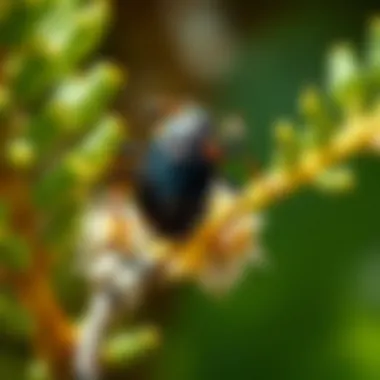
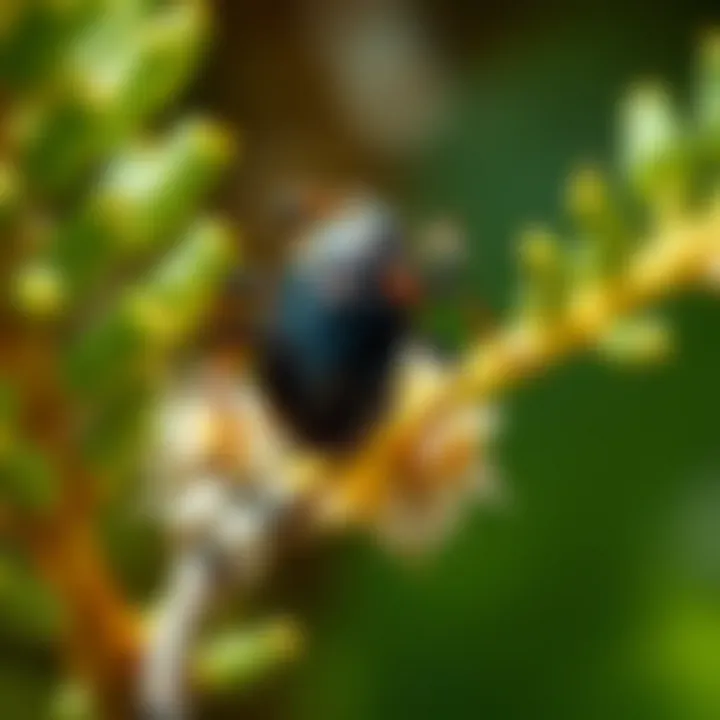
- Regular Inspections: Regular check-ups of bedding, furniture, and potential hiding spots help catch infestations early, allowing for timely Crossfire application.
- Physical Barriers: Utilizing mattress covers and sealing potential entry points can prevent bed bugs from finding refuge, reducing their numbers over time.
- Heat Treatments: Incorporating heat treatments alongside Crossfire can offer a one-two punch to eliminate both resistant adults and eggs effectively.
- Insect Growth Regulators (IGRs): Integrating IGRs with Crossfire disrupts the lifecycle of bed bugs, preventing them from maturing and reproducing, reducing future populations significantly.
- Monitoring Tools: Bed bug monitors and traps can be set at strategic points to gauge ongoing activity and responsiveness to treatment.
In summary, effectively integrating Crossfire bed bug insecticide within an IPM strategy not only enhances the chances of immediate eradication but also fosters long-lasting pest management solutions, keeping your home free of these nuisances. For more detailed pest management strategies and information, resources from CDC.gov, EPA.gov and Extension.org can be invaluable.
Common Myths about Bed Bug Treatments
When it comes to addressing bed bug infestations, myths often cloud judgment and lead to ineffective solutions. It’s essential to separate fact from fiction, not just for the sake of effective treatment but also to empower homeowners with accurate information. Misunderstandings can lead to wasted time, effort, and money. As such, this section weaves through prevalent misconceptions about bed bug treatments, helping readers navigate the murky waters of pest control with clarity and confidence.
Debunking Misconceptions
There are several widely held beliefs when it comes to bed bug treatments. One of the most common is that these pests can be eradicated simply with household cleaning. While maintaining cleanliness can help limit bed bug hiding spots, it cannot completely eliminate an infestation. Bed bugs are adept at hiding in inconspicuous areas like mattress seams, behind baseboards, and even within furniture.
Here are some more misconceptions that are frequently floated around:
- You can get rid of bed bugs with home remedies alone. While some natural solutions may help deter bed bugs, they rarely provide a comprehensive solution.
- Bed bugs are linked to poor hygiene. This is a dangerous myth. Bed bugs don’t discriminate; they can thrive in both pristine and cluttered environments.
- You can simply treat bed bugs once and be done. The truth is, multiple treatments are often necessary. Bed bugs lay eggs that may not be immediately affected by quick sprays, requiring follow-up applications often weeks apart.
"An informed homeowner is the best defense against bed bug infestations."
Each of these beliefs can detract from effective treatment strategies. By busting these myths, homeowners can set realistic expectations and approach pest control with the seriousness it deserves.
Educating the Public
Educating oneself and the community plays a critical role in combatting bed bug infestations. Awareness around what bed bugs are, their habits, and the realities of treatment methods can make a significant difference. For instance, understanding how bed bugs hitch rides on luggage, clothing, and even used furniture is crucial for prevention, particularly when moving into a new space or returning from travel.
Moreover, public workshops or informational sessions can serve as invaluable resources. Homeowners can learn about the signs of bed bug presence, such as small reddish stains on bedding or the musty odor of their excrement. Engaging local pest control professionals to share their knowledge could foster a communal effort against these pests.
Incorporating straightforward guidelines can also be beneficial:
- Check secondhand furniture carefully. Look for any signs of bed bugs before choosing to bring items inside.
- Partake in regular inspections. Keeping a vigilant eye on sleeping areas can catch infestations early.
- Encourage community discussions. Sharing stories of infestations can provide insight into what worked (or didn’t work) in treatments.
By providing comprehensive education, communities can diminish the stigma surrounding bed bugs and foster a sense of collective responsibility in addressing infestations head-on. A well-informed public is a strong ally in the fight against these unwelcome intruders.
Future Perspectives in Bed Bug Control
The ongoing battle against bed bugs has seen significant advancements over the years, and understanding the future perspectives in bed bug control is crucial for homeowners and pest control professionals alike. As the world continues to evolve, so do the methods and strategies for dealing with these pesky insects. It’s as important as ever to stay abreast of innovations and emerging trends in pest control, ensuring effective and sustainable solutions.
Innovation in Pest Control Solutions
Innovation plays a pivotal role in addressing bed bug infestations effectively. New technologies and products are constantly being developed, enhancing the efficacy of treatments while minimizing potential risks to humans and pets. For instance, researchers have been exploring the use of heat treatments alongside existing insecticides like Crossfire. Heat remediation can eradicate bed bugs at all life stages, complementing chemical treatments and leading to integrated pest management approaches.
Another notable innovation is the development of smart pest control tools. Devices equipped with sensors can detect bed bug presence early, providing crucial information to homeowners. This proactive approach means that infestations can be addressed before they escalate, reducing the overall burden of pest control.
Furthermore, biopesticides and organic options are gaining traction. These solutions often utilize naturally occurring materials or microorganisms to target and kill bed bugs. They promote a healthier living environment, aligning with eco-conscious values while still effectively managing pest populations. Options such as diatomaceous earth are also being refined for better effectiveness.
Research and Development Possibilities
The realm of research and development in bed bug control is vast, with many avenues still yet to explore. Scientists are continuously studying bed bug behavior, genetics, and resistance patterns. For example, understanding their reproductive patterns can lead to developments in methods that target breeding sites, thus preventing the establishment of new infestations.
Moreover, new chemical formulations are being developed to overcome resistance that bed bugs have built against commonly used insecticides. This effort is vital, as resistance poses one of the greatest challenges to effective bed bug management today. By staying ahead of these patterns, pest control strategies can be adapted and refined.
Another area ripe for development lies in the interaction between bed bugs and their environment. Insights into how these pests thrive in specific conditions can lead to more precise application strategies that consider factors like temperature and humidity.
"The future of bed bug control hinges on embracing innovation and deepening our understanding of these pests."
All in all, as pest control solutions advance and research uncovers the underlying complexities of bed bug infestations, homeowners and professionals can look forward to more engaging and efficient strategies. By keeping up with future perspectives in bed bug control, decisions can be made rooted in informed understanding, ultimately leading to a pest-free home.
Closure
In examining the complexities surrounding Crossfire bed bug insecticide, it is vital to reflect on the critical aspects discussed throughout this guide. Understanding the intricacies of this product isn't merely an academic exercise; it's essential for effective pest management in home environments. The information gathered here highlights various elements, from its formulation to the safe application methods, all aimed at achieving lasting results against bed bug infestations.
Summary of Key Points
- Composition and Action: Crossfire combines dual active ingredients, which target bed bugs at various life stages. Its efficiency stems from a well-thought-out formulation designed for rapid knockdown while minimizing resistance.
- Application Techniques: Success is heavily reliant on precise application. Proper preparation, adherence to recommended methods, and post-application monitoring are key components that ensure the effectiveness of the treatment.
- Safety Measures: Understanding the importance of using safety equipment and the implications for humans and pets cannot be overstated. It's also essential to consider the environmental impacts, ensuring non-target species remain unharmed.
- Integration with Broader Strategies: Rather than a stand-alone solution, Crossfire fits within the framework of Integrated Pest Management (IPM). When used in conjunction with complementary methods—like thorough cleaning and behavioral adjustments—its efficacy is greatly enhanced.
In pest management, a comprehensive approach often leads to better outcomes than relying solely on one solution.
Final Thoughts on Crossfire Application
As we wrap up this extensive exploration, it's clear that employing Crossfire bed bug insecticide necessitates a thoughtful approach. Homeowners and pest control practitioners alike must appreciate that the battle against bed bugs is a multifaceted one. Knowledge of how, when, and where to use Crossfire can spell the difference between a fleeting encounter with these pests or a successful, long-term eradication.
In the end, these insights aim to empower individuals in their fight against bed bugs. Equipping oneself with the right knowledge fosters confidence and increases the likelihood of achieving a pest-free environment. Remember, every little detail counts when tackling infestations—be it ensuring proper spray coverage or following safety protocols. Taking these factors into account not only benefits the individual but also contributes positively to community efforts in managing pest populations effectively.



